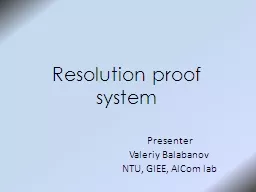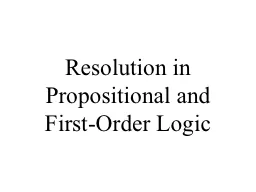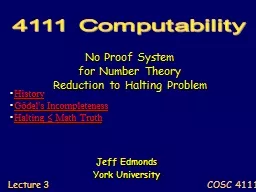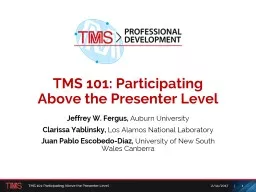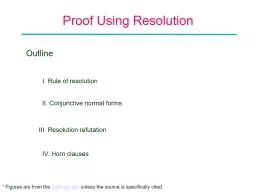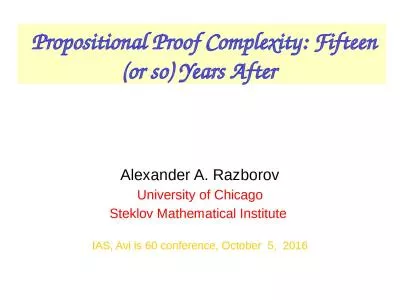PPT-Resolution proof system Presenter
Author : lois-ondreau | Published Date : 2018-03-16
Valeriy Balabanov NTU GIEE AlCom lab Outline Basic definitions Keyfacts about resolution proofs Intractability of resolution Heuristics for proof minimization
Presentation Embed Code
Download Presentation
Download Presentation The PPT/PDF document "Resolution proof system Presenter" is the property of its rightful owner. Permission is granted to download and print the materials on this website for personal, non-commercial use only, and to display it on your personal computer provided you do not modify the materials and that you retain all copyright notices contained in the materials. By downloading content from our website, you accept the terms of this agreement.
Resolution proof system Presenter: Transcript
Download Rules Of Document
"Resolution proof system Presenter"The content belongs to its owner. You may download and print it for personal use, without modification, and keep all copyright notices. By downloading, you agree to these terms.
Related Documents

